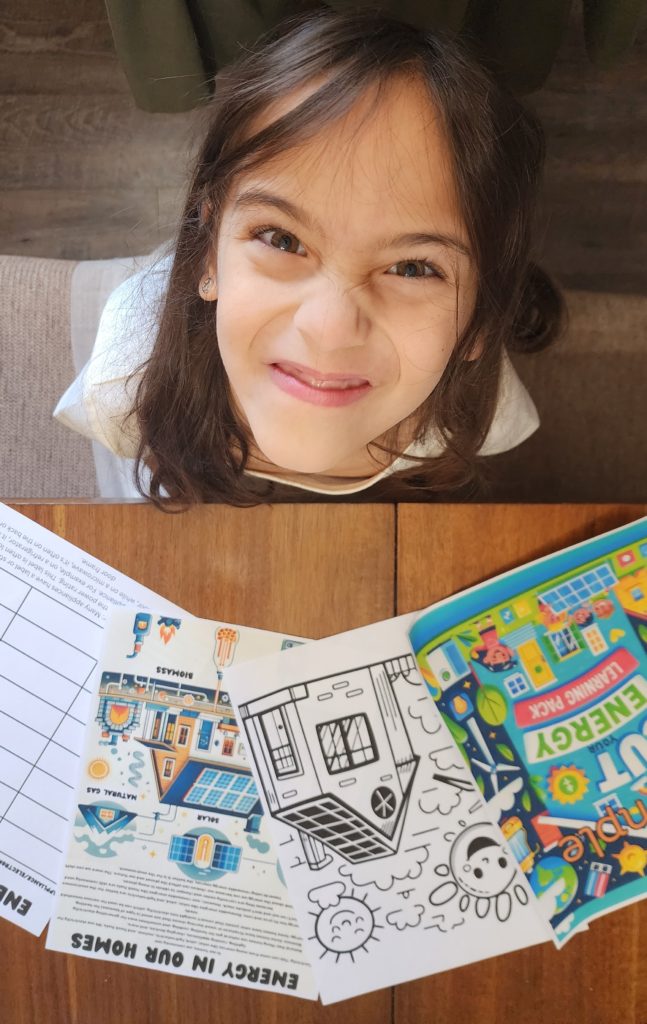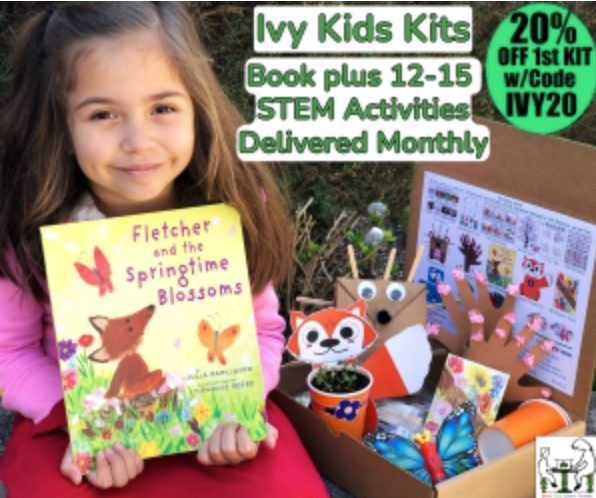As a homeschooler, you have an important job of preparing your kids to be adults. One thing we all should know, but many young adults don't know about, is energy use! I don't mean just what your energy bill says each month, but how you contribute and use energy in your home and lives. With current issues with energy conservation and renewable energy, it is so important that you teach your kids how to manage their resources effectively. I wrote this blog post to help you do that! Even the smallest of changes or lessons can have a big impact on the future. Here are some ideas to impress energy conservation into your kids' minds.
The Importance of Reducing Energy Use for Environmental Health and Sustainability
Reducing your energy use has a big impact on environmental health and the sustainability of our planet. We you focus on energy conservation, you are also decreasing the emission of greenhouse gases, which is a big factor in global warming and climate change. When you reduce your energy usage, you are also creating LESS demand for fossil fuels like coal, oil, and natural gas, which are major contributors to air and water pollution. Making the choice to conserve energy not only helps the world preserve its natural resources, but it also creates a healthier environment such as cleaner air, less harmful emissions, and a more stable ecosystem. Every watt saved contributes to a greener, and more sustainable future.

Script for Parents to Explain This to Their Kids:
“Hey kids, let's talk about why it's really important to save energy. You know how we love spending time in nature, enjoying the fresh air and beautiful landscapes? Well, using less energy helps keep the environment clean and healthy. When we save energy, we help reduce air pollution, which is really important for the trees, animals, and even us! It's like helping the Earth breathe easier. Plus, by using less electricity, we help save precious resources, like water and gas, so there's enough to go around for everyone, even when you grow up. So, every time we turn off the lights when leaving a room, remember, we're doing our part to keep our planet happy and healthy. It's our little way of taking care of the Earth, just like how we take care of our home and family.”
You can find more ways to teach kids about energy in my Cut Your Energy Learning Pack available in my Shop.
Practical Tips for Decreasing Energy Use at Home
Here are some practical tips to decrease energy use in your home.
- Energy Audit: Involve kids in a home energy audit. Identify which appliances use the most energy and brainstorm ways to reduce their usage. (An energy audit activity is available as part of my Cut Your Energy Learning Pack in my Shop)
- DIY Projects: Engage in DIY projects like creating a solar cooker or assembling a small wind turbine model.
- Nature-Based Learning: Utilize the outdoors for lessons; studying in natural light saves energy and connects children with the environment.
Incorporating Energy Education into Your Homeschool Curriculum
- Science Experiments: Simple experiments can illustrate concepts like how energy is generated and used. There are a few electrical circuit kits you can get for your homeschool at Hand2Mind.
- Math Projects: Calculate your home's energy consumption and savings after implementing conservation techniques. Learn how to calculate the power rating by the hours the electronic is used per day. Then learn how to convert it to the common kWh. (An energy math calculation activity is available as part of my Cut Your Energy Learning Pack in my Shop)
- Art and Creativity: Encourage children to express their learning through art, such as creating posters about saving energy.
- Subscribe to kids STEM boxes like those offered at Ivy Kids.
Ivy Kids Kits is an award winning and well-established subscription box company for children ages 3-8. Ivy Kids creates monthly book-inspired, activity packed educational kits. Each Ivy Kids kit includes a carefully selected, highly rated children's book and over 12 fun, creative, and unique hands-on activities that promote the development of math, science, literacy, engineering, and art skills through play and exploration. Inside an Ivy Kids kit there are board games, arts and crafts, science experiments, projects, math manipulatives, story characters and so much more. Everything you need to read, play, create and learn is included in the kit and conveniently delivered monthly!
Energy-Saving Challenges
Create weekly challenges for your family to reduce energy usage. Track your progress and celebrate successes to make it a fun, rewarding experience. I have provided a monthly energy graphing page in my Cut Your Energy Learning Pack.
Fun Experiments About Energy
- Lemon Power: Teach your kids about converting chemical energy into electrical energy using a lemon, copper wire, and steel wire. This experiment demonstrates how a lemon can act as a voltaic battery, creating a small electrical current. It's a simple yet fascinating way to introduce the concept of energy conversion.
- Heat Up a Balloon: This experiment uses a deflated balloon, a plastic bottle, and hot water to show how warm air expands. It's a great way to demonstrate how molecules move in different temperatures and how this affects the inflation of the balloon without additional air.
- Water Purification: Using an outdoor setup, this experiment demonstrates the sun's energy for water purification. By creating a simple system with a bowl of water, a cup, and some spices, kids can learn how the sun's heat helps in the evaporation and condensation process, leading to purified water.
- Light Refraction: This easy experiment uses a sticky note, marker, transparent water bottle, and water to show how light travels and refracts. It's an excellent way to explain the concept of light refraction to kids in a visual and interactive manner.
- DIY Solar Oven: With some adult help, you can create a mini oven using a pizza box, aluminum foil, and the sun's rays. It's a practical experiment to show how solar energy can be harnessed to heat and cook food.
- Animal Blubber Simulation: This experiment is about how animals like polar bears stay warm. Using shortening and ice water, kids can simulate and feel the effect of blubber as insulation against cold temperatures.
These experiments are not only educational but also a lot of fun, providing hands-on learning experiences about various energy concepts. For more ideas, you can visit We Are Teachers, Science Buddies, or Pinterest.

Cut Your Energy Learning Pack
Embark on an enlightening journey with the “Cut Your Energy Learning Pack,” expertly crafted for middle and elementary school students. This comprehensive pack is designed to educate young minds about the significance of energy, its various forms, and the importance of energy conservation in an interactive and engaging manner.
Get the Cut Your Energy Learning Pack
After exploring various hands-on and interactive ways to teach and learn about energy conservation, it's time to introduce a resource that can further enhance this educational journey. The “Cut Your Energy Learning Pack” is designed specifically for young learners, particularly those in middle and elementary school, to deepen their understanding of energy use and conservation in an engaging and practical way.
This reusable pack is a treasure trove of learning materials. It includes vibrant infographics that simplify complex concepts about different types of energy and how they're used in our homes. These visuals make learning more accessible and enjoyable, helping kids to grasp the essentials of energy sources and their environmental impact.
Calculate Your Home's Energy Use
But the learning doesn't stop at just reading and observing. The pack comes equipped with an “Energy in Our Homes Appliance Chart,” where kids can actively participate by listing the appliances in their home, noting their power ratings, and the duration of their usage. This activity not only educates them about energy consumption but also sharpens their analytical skills.

To add an element of fun, the pack includes a section called “Calculate Your Energy Usage.” Here, kids get to apply basic math skills to calculate the daily energy usage of each appliance in kilowatt-hours (kWh). It's a practical way to bring math lessons to life while teaching important lessons about energy efficiency.
For continuous learning and tracking, the pack offers a “Monthly Usage Tracker.” This tool is perfect for instilling long-term awareness and habits in reducing energy consumption. It encourages the whole family to participate and monitor their progress in energy saving.
Includes Coloring Pages
Additionally, pack includes tips on saving energy and encourages kids to think of more ways they can conserve energy, sparking creativity and critical thinking. And to ensure that the learning experience caters to all aspects of a child's development, it features engaging coloring pages. These pages are not just for artistic expression but are themed around energy conservation, thus reinforcing the learning in a fun and relaxing way.
The “Cut Your Energy Learning Pack” is more than just an educational resource; it's an engaging, practical toolkit that brings the whole family together in the quest for a more sustainable future. Whether for homeschooling or as a supplementary resource in traditional classroom settings, this pack is an invaluable addition to any educational environment.
Ready to dive into the world of energy with your kids? Click here to get your hands on the “Cut Your Energy Learning Pack” today and transform learning into an exciting and meaningful adventure!
Conclusion
Teaching our children about energy conservation is not just about reducing bills; it's about nurturing responsible, environmentally conscious individuals. The “Cut Your Energy Learning Pack” can be a great addition to your homeschooling resources, making learning about energy use engaging and practical.
You can explore more science in your homeschool by checking out my article 20 Science Questions to Explore With Your Kids.
I would love to include you in my prayers as we both pray over our lives and children. Feel free to email me and let me know how your journey is going.





